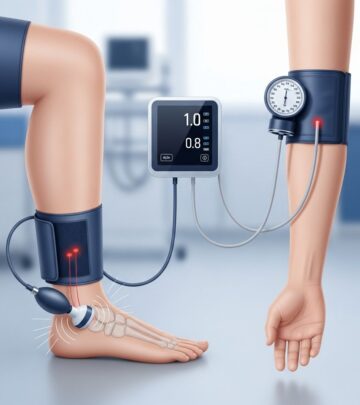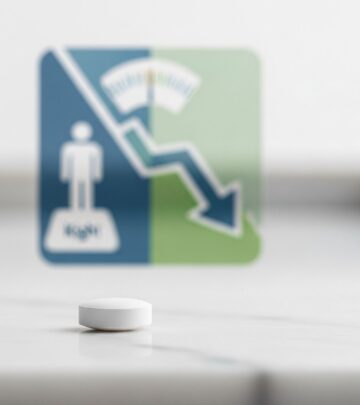Metronidazole Vaginal Route: Uses, Dosage, Precautions, and Guidance
A comprehensive guide to the safe and effective use of metronidazole for vaginal infections, including usage instructions, precautions, and side effects.

Metronidazole Vaginal Route: Description and Patient Guidance
Metronidazole is a prescription antibiotic medication commonly used in its vaginal gel form to treat vaginal infections, particularly bacterial vaginosis. It is classified under nitroimidazole antimicrobials, a group of drugs that stop the growth of certain bacteria in the vagina by disrupting their DNA. Proper use and adherence to safety precautions are crucial for effective treatment and for minimizing unwanted effects.
What is Metronidazole Vaginal Gel?
Metronidazole vaginal gel is a topical (local) antibiotic specifically formulated to target infections inside the vagina. This route of administration minimizes systemic drug exposure while delivering the medication directly to the site of infection for maximum efficacy. It is most frequently prescribed to treat:
- Bacterial vaginosis (BV): An infection caused by an overgrowth of certain bacteria in the vagina, resulting in an imbalance of the natural vaginal flora.
- Trichomoniasis: Occasionally used, but oral metronidazole is the preferred route.
How Does It Work?
Metronidazole works by penetrating bacterial and protozoal cells, disrupting their DNA, and halting their growth. This action clears the infection by reducing the population of pathogenic organisms while having minimal impact on beneficial bacteria. It is not effective for viral or fungal infections, such as yeast infections or herpes.
Before Using Metronidazole Vaginal Gel
Before starting treatment, you and your healthcare provider should discuss the benefits and risks of this medication. Inform your doctor if you have any allergies, are pregnant or breastfeeding, or have a history of certain medical conditions.
Allergies
- Inform your healthcare provider if you have ever had any allergic reactions to metronidazole, other antibiotics, or any substances in the product.
- Disclose any sensitivity to drugs, preservatives, dyes, or foods.
Pediatric Use
- The safety and efficacy of metronidazole vaginal gel have not been established in children. Use is generally not recommended in this population.
Geriatric Use
- No specific differences in safety or effectiveness have been reported in elderly patients. However, older adults may be more likely to have age-related health problems that could influence medication selection and dosage.
Pregnancy and Breastfeeding
- Pregnancy: Tell your doctor if you are, or may become, pregnant. Metronidazole crosses the placenta and is generally avoided in the first trimester unless deemed absolutely necessary. Studies in later pregnancy have not shown increased risk, but discuss with your provider.
- Breastfeeding: Metronidazole is excreted in breast milk. Your doctor will weigh the benefits and risks before recommending use. You may be advised to avoid breastfeeding or to express and discard milk during and shortly after therapy, depending on dosing.
Other Medical Problems
- Inform your healthcare provider of any liver disease, seizure disorders, blood disorders, or neurological conditions, as these may affect your treatment plan or increase the risk of side effects.
Proper Use and Administration
Metronidazole vaginal gel must be used exactly as prescribed. Do not use more or less than directed, and complete the entire course of therapy even if your symptoms improve early. Skipping doses or stopping early can allow the infection to return.
General Instructions
- Apply the gel using the special applicator provided with your medication.
- The usual regimen is one full applicator (approximately 5 grams) intravaginally once daily, typically at bedtime, for 5 consecutive days. Some products may differ; always follow your pharmacy label or provider’s instructions.
- Wash your hands before and after each use.
How to Use the Gel Applicator
- Prepare: Remove the cap from the medication tube. Attach the disposable applicator to the tube.
- Load: Squeeze the tube to fill the applicator barrel until it reaches the indicated mark.
- Position: Lie on your back with knees bent and spread apart for easier access.
- Insert: Gently insert the applicator deep into the vagina and press the plunger to release the entire dose.
- Dispose: Remove the applicator and discard (if single-use) or wash thoroughly with soap and warm water if reusable.
- Clean: Wash your hands thoroughly.
While Using Metronidazole Vaginal Gel
- Avoid sexual intercourse during treatment.
- Do not use tampons, douches, or other vaginal products while receiving this medication.
- Take the medication at evenly spaced intervals as close to prescribed times as possible.
- If you miss a dose, apply it as soon as remembered unless it is almost time for your next dose. Do not double up doses.
Dietary Considerations
- Avoid drinking alcohol while using metronidazole and for at least 24 hours after the final dose. Alcohol can cause unpleasant reactions such as nausea, vomiting, cramps, headaches, and flushing.
Dosage and Duration
The exact dose and duration of therapy depend on the infection, the preparation prescribed, and your medical status. Common regimens include:
| Condition | Adult Dosage | Duration |
|---|---|---|
| Bacterial Vaginosis | One applicator (5 g) vaginally at bedtime | 5 consecutive days |
| Other Infections | Per physician prescription | Varies |
Always adhere to the dosing schedule and do not interrupt therapy unless advised by your healthcare provider.
Precautions While Using Metronidazole Vaginal Gel
Some precautions and lifestyle considerations are important while undergoing treatment:
- Do not engage in vaginal intercourse until cleared by your doctor, as doing so can hinder recovery and potentially spread infection.
- Contraceptive methods: Some products, like clindamycin, can weaken latex condoms; check your specific medication insert. Metronidazole vaginal gel itself is not known to do so, but always verify with your pharmacist.
- If symptoms persist, worsen, or recur shortly after therapy, contact your healthcare provider. Some infections can be resistant or recur, requiring further management.
- Avoiding alcohol includes products that may contain alcohol, such as some mouthwashes and cough syrups, to prevent adverse reactions.
Possible Side Effects
Like all medications, metronidazole vaginal gel can cause side effects. Most effects are mild and temporary, but some may require medical attention.
Common Side Effects
- Vaginal discharge (often thin and gray, which may be difficult to distinguish from the infection itself)
- Vaginal irritation, itching, or burning
- Lower abdominal or pelvic discomfort
- Unusual or unpleasant taste in the mouth (if any medication is systemically absorbed)
- Headache
- Gastrointestinal symptoms, such as nausea or cramps, are possible but less common with the vaginal route
Serious Side Effects (Rare)
- Severe allergic reactions: rash, itching/swelling, severe dizziness, trouble breathing
- Signs of a new vaginal infection, such as increased discharge, odor, or persistent irritation
- Seizures, severe headache, or confusion (exceedingly rare with proper local use)
Contact your doctor promptly if you experience any severe adverse reactions.
Drug Interactions
Before using metronidazole vaginally, describe all medicines you currently take (prescription, over-the-counter, herbal, and vitamins) to your healthcare provider. Potential interactions may include:
- Alcohol: Drinking alcohol with metronidazole can cause severe reactions.
- Oral warfarin: May enhance anticoagulant effect, increasing risk of bleeding.
- Other medications metabolized via similar liver enzymes may be affected. Always check with your healthcare professional.
Missed Dose Guidelines
If you forget a dose, use it as soon as you remember. If it is nearly time for your next scheduled dose, skip the missed dose and resume your regular dosing schedule. Do not double dose to catch up.
Storage Instructions
- Store metronidazole vaginal gel at room temperature, away from heat, moisture, and direct light.
- Do not freeze.
- Keep all medicine out of children’s reach.
- Do not use expired medication. Dispose of unused gel according to your pharmacist’s instructions.
When to Contact Your Doctor
- If you experience allergic reactions, such as swelling, rash, or difficulty breathing.
- Symptoms do not improve within a few days or recur after completing therapy.
- Severe side effects, such as numbness, burning, tingling, seizures, or persistent headache.
- You notice unexpected bleeding or unusual vaginal symptoms.
Frequently Asked Questions (FAQs)
Q: What conditions does vaginal metronidazole treat?
A: Vaginal metronidazole is primarily used to treat bacterial vaginosis and may occasionally be used for trichomoniasis, but oral medication is usually preferred for the latter.
Q: Can I use tampons during treatment?
A: No, avoid tampons and other intravaginal products (such as douches) during therapy, as they can interfere with the effectiveness of metronidazole and may irritate the vaginal tissues.
Q: Do I need to treat my sexual partner?
A: Generally, male sexual partners do not need treatment for bacterial vaginosis. However, if you have female partners who show symptoms, they should be tested and treated if necessary.
Q: What if my symptoms return after treatment?
A: Recurrence of bacterial vaginosis within 3–12 months after treatment is common. Contact your provider, who may suggest an alternative or extended-release therapy.
Q: Can I drink alcohol while using metronidazole gel?
A: No, you should avoid alcohol during treatment and for at least 24 hours after your final dose to prevent severe reactions.
Additional Patient Advice
- Complete the full course of treatment, even if symptoms improve early.
- Do not share your medication with others and only use it for conditions prescribed by your healthcare provider.
- Routine follow-up is advised to ensure the infection has resolved fully and to prevent recurrences.
Summary Table: Key Considerations for Metronidazole Vaginal Gel
| Aspect | Guidance |
|---|---|
| Indication | Bacterial vaginosis, per healthcare provider |
| Dosage | One applicator, intravaginally, usually at bedtime for 5 days |
| Alcohol | Avoid during use and for 1 day (24 hours) after completion |
| Pregnancy/Breastfeeding | Use only if advised by your provider, especially in early pregnancy |
| Side Effects | Vaginal discomfort, discharge, rarely allergic reactions |
| Missed Dose | Apply as soon as remembered; skip if almost time for next dose |
| Storage | Room temperature; no freezing; out of children’s reach |
Helpful Resources
- Pharmacist or healthcare provider for medication-specific questions
- Package insert for detailed usage and safety information
- Reputable online medical libraries and healthcare networks
Read full bio of Sneha Tete












